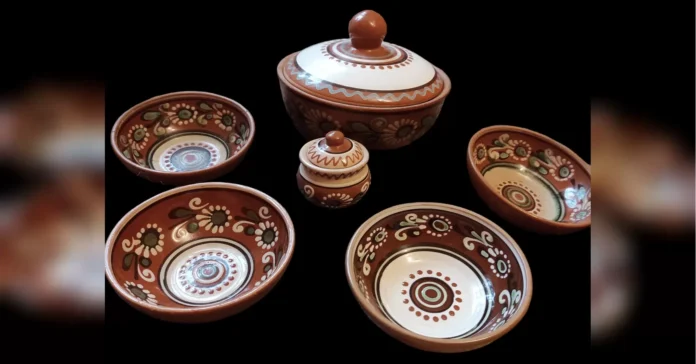In an interview with «FACTS», a researcher of Ukrainian porcelain and ceramics history shared her knowledge about the country’s maiolica. Maiolica, also known as majolica, is a type of tin-glazed earthenware that has been produced in Ukraine for centuries. The researcher, whose name is Oksana, has dedicated her career to studying and preserving the rich history of Ukrainian maiolica.
Oksana’s passion for maiolica began at a young age when she would visit her grandmother’s house in the countryside. Her grandmother had a collection of maiolica plates and bowls that were passed down through generations. Oksana was fascinated by the intricate designs and vibrant colors of the maiolica pieces. As she grew older, her interest in maiolica only intensified, and she decided to pursue a career in researching and promoting this traditional Ukrainian art form.
In the interview, Oksana shared that maiolica has a long history in Ukraine, dating back to the 16th century. It was initially introduced by Italian craftsmen who were invited to Ukraine by the wealthy landowners to decorate their estates. Over time, Ukrainian artisans developed their unique style and techniques, incorporating traditional Ukrainian motifs and symbols into their maiolica pieces.
One of the most remarkable aspects of Ukrainian maiolica is its diversity. Each region of Ukraine has its distinct style and color palette, making it a true representation of the country’s cultural heritage. For example, maiolica from the western regions of Ukraine is known for its bright colors and intricate floral patterns, while maiolica from the eastern regions has a more subdued color scheme and features geometric designs.
Oksana also talked about the challenges of preserving and promoting Ukrainian maiolica. With the rise of industrialization and mass production, traditional crafts like maiolica have faced a decline in popularity. However, Oksana and other researchers and artists are working tirelessly to revive and promote this unique art form. They organize exhibitions, workshops, and educational programs to raise awareness and appreciation for Ukrainian maiolica.
Despite the challenges, Oksana remains optimistic about the future of maiolica in Ukraine. She believes that the younger generation is showing a renewed interest in traditional crafts and is eager to learn and preserve them. Oksana also mentioned that the government has taken steps to support and promote Ukrainian maiolica, which is a positive sign for the future of this art form.
In conclusion, Ukrainian maiolica is a beautiful and significant part of the country’s cultural heritage. Thanks to dedicated researchers like Oksana, this traditional art form is receiving the recognition and appreciation it deserves. With their efforts, maiolica will continue to thrive and be passed down to future generations, preserving the rich history and traditions of Ukraine.

